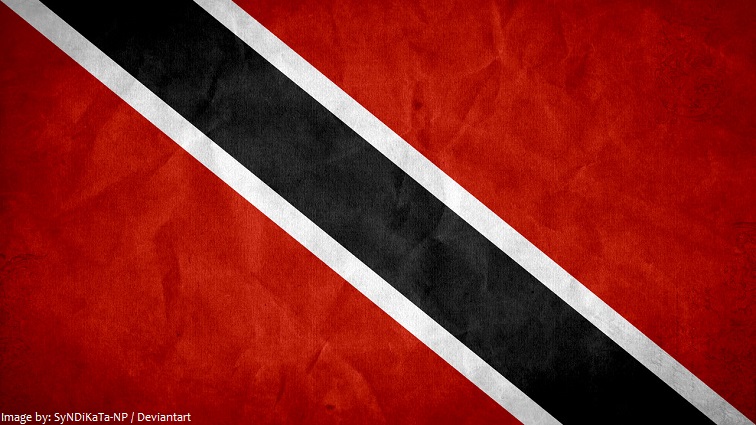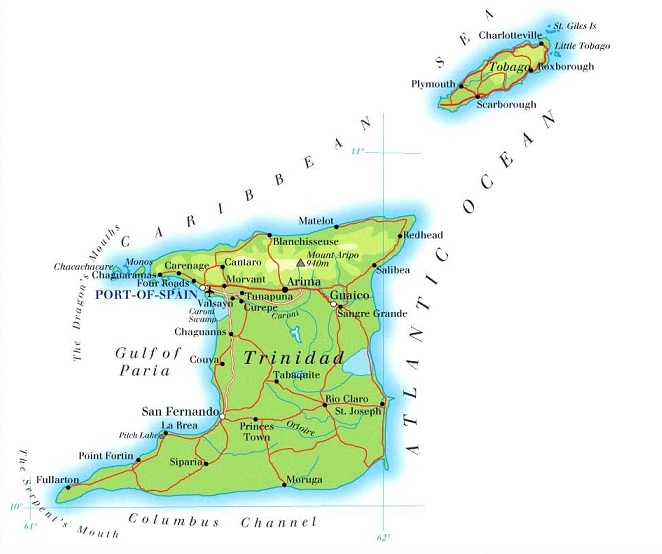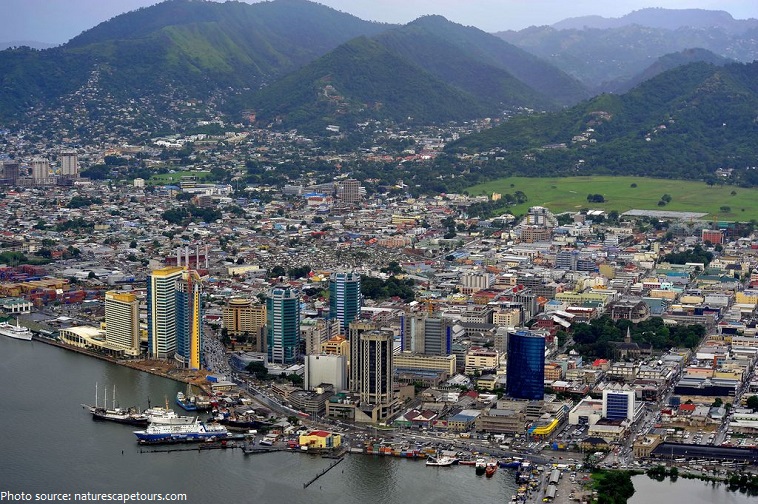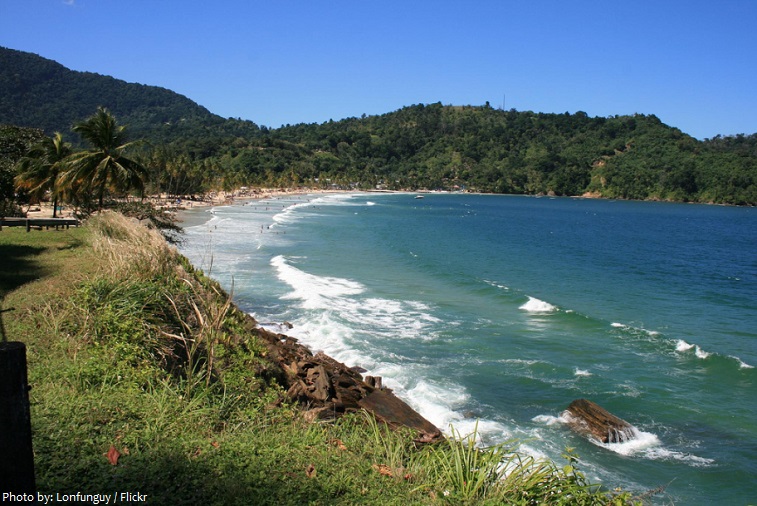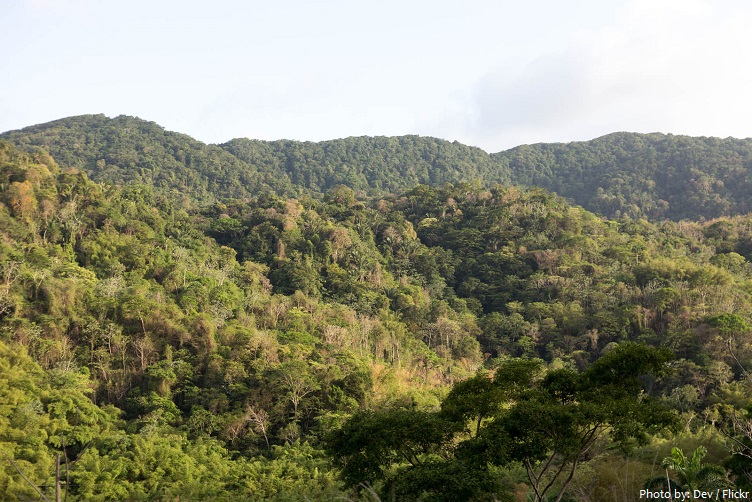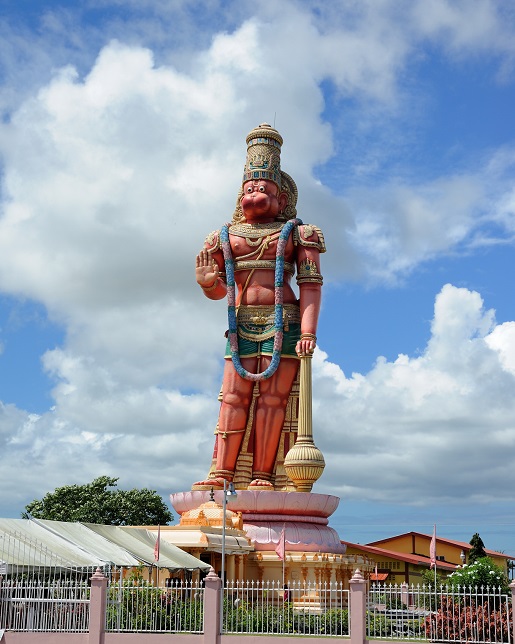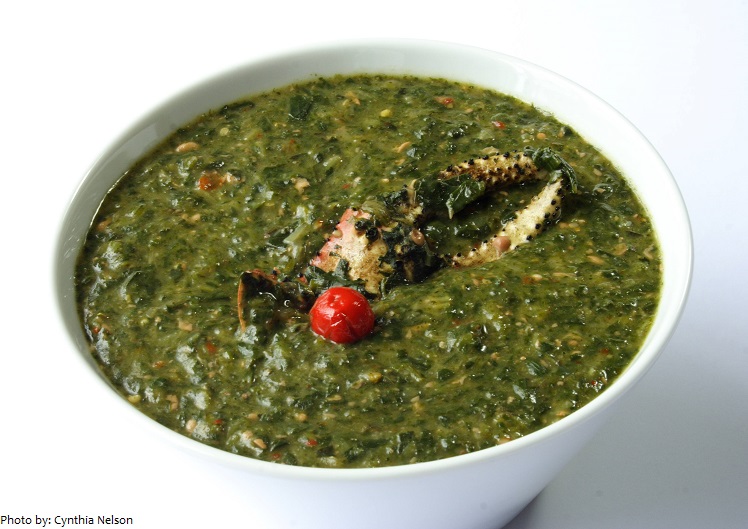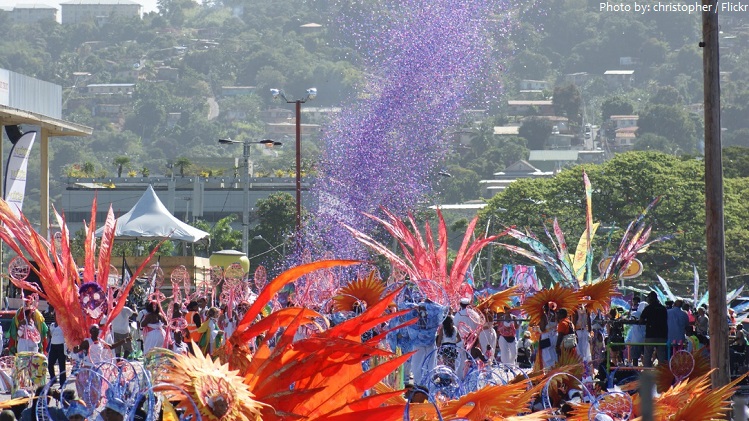Trinidad and Tobago is a dual-island Caribbean nation with distinctive Creole traditions and cuisines.
The official name of the country is the Republic of Trinidad and Tobago.
Trinidad and Tobago is situated off the northern edge of the South American mainland, lying just 11 kilometers (6.8 miles) off the coast of northeastern Venezuela and 130 kilometers (81 miles) south of Grenada.
The official language is English.
As of 1 January 2016, the population of Trinidad and Tobago was estimated to be 1,363,760 people.
Covering an area of 5,128 square kilometers (1,980 square miles), the country consists of the two main islands, Trinidad and Tobago, and numerous smaller landforms.
Trinidad is 4,768 square kilometers (1,841 square miles) in area (comprising 93.0% of the country’s total area) with an average length of 80 kilometers (50 miles) and an average width of 59 kilometres (37 miles). Tobago has an area of about 300 square kilometers (120 square miles), or 5.8% of the country’s area, is 41 kilometers (25 miles) long and 12 kilometers (7.5 miles) at its greatest width.
Port of Spain, on the northwest coast of Trinidad island, is the capital city of Trinidad and Tobago. A bustling and friendly city, Port of Spain is the hub for the Trinidad’s famous carnival.
Trinidad is mainly flat and rolling, with mountains in the north. Tobago is mountainous and heavily forested with hardwood trees.
El Cerro del Aripo, at 940 meters (3,084 feet) above sea level, is the highest point in the Republic of Trinidad and Tobago.
Trinidad and Tobago have a coastline length of 362 kilometers (225 miles).
Tobago has more than its fair share of idyllic Caribbean beaches and clear blue waters. Trinidad which is better known for cultural richness and nature activities has many beautiful coves to offer.
Pigeon Point with its picturesque boardwalk which leads directly into the sea is often considered Tobago’s most beautiful beach.
Measuring 2 meters (10 feet) by 5 meters (16 feet), the world’s largest piece of brain coral can be found at the popular diving and snorkeling spot Speyside.
The Pitch Lake is the largest natural deposit of asphalt in the world, located in southwest Trinidad. The lake covers about 40 hectares (100 acres) and is reported to be 75 meters (245 feet) deep. Pitch Lake is a tourist attraction that attracts about 20,000 visitors annually. It is also mined for asphalt by Lake Asphalt of Trinidad and Tobago.
The Main Ridge Forest Reserve is the oldest protected rain forest in the Western hemisphere and is biodiverse. The Main Ridge extends about two thirds of the length of Tobago. It was designated a protected Crown reserve on 17 April 1776.
Trinidad is home to the largest Hanuman Murti statue outside of India. Standing 26 meters (85 feet) tall, the red and pink statue of the Hindu deity represents wisdom, righteous and strength.
When Trinidad was explored by Columbus in 1498, it was inhabited by the Arawaks; Carib Indians inhabited Tobago. Trinidad remained in Spanish possession, despite raids by other European nations, until it was ceded to Britain in 1802. Tobago passed between Britain and France several times, but it was ultimately given to Britain in 1814. Slavery was abolished in 1834. Between 1845 and 1917, thousands of indentured workers were brought from India to work on sugarcane plantations. In 1889 Trinidad and Tobago were made a single colony.
Partial self-government was instituted in 1925, and from 1958 to 1962 the nation was part of the West Indies Federation. On Aug. 31, 1962, it gained independence and on Aug. 1, 1976, Trinidad and Tobago became a republic, remaining within the Commonwealth.
Trinidad and Tobago is one of the wealthiest and most developed nations in the Caribbean. Trinidad’s economy is strongly influenced by the petroleum industry. Tourism and manufacturing are also important to the local economy.
A representative main dish from Trinidad and Tobago is roti, curry chicken, pholourie, and tamarind sauce. Crab and callaloo [photo below] is generally considered a national dish of Trinidad and Tobago; it is often prepared for Sunday lunch.
The biggest and most well known festival of the Caribbean Islands, Trinidad and Tobago Carnival is thought to have originated in the 18th century. The event is well known for participants’ colorful costumes and exuberant celebrations.
The Limbo dance was created in Trinidad.
Trinidad is the birthplace of the steel pan. Steel Pan, the national instrument of Trinidad and Tobago is the only acoustic musical instrument to be invented in the 20th Century.
Janelle Commissiong, the first Black Miss Universe, is a Trinidadian and was crowned in 1977.
The Trinidad moruga scorpion (Capsicum chinense) is native to the district of Moruga in Trinidad and Tobago. On February 13, 2012, New Mexico State University’s Chile Pepper Institute identified the Trinidad moruga scorpion as the hottest chili in the world.
The novels “Robinson Crusoe” and “Treasure Island” were based on these islands, and the movie “Swiss Family Robinson” was filmed here.
